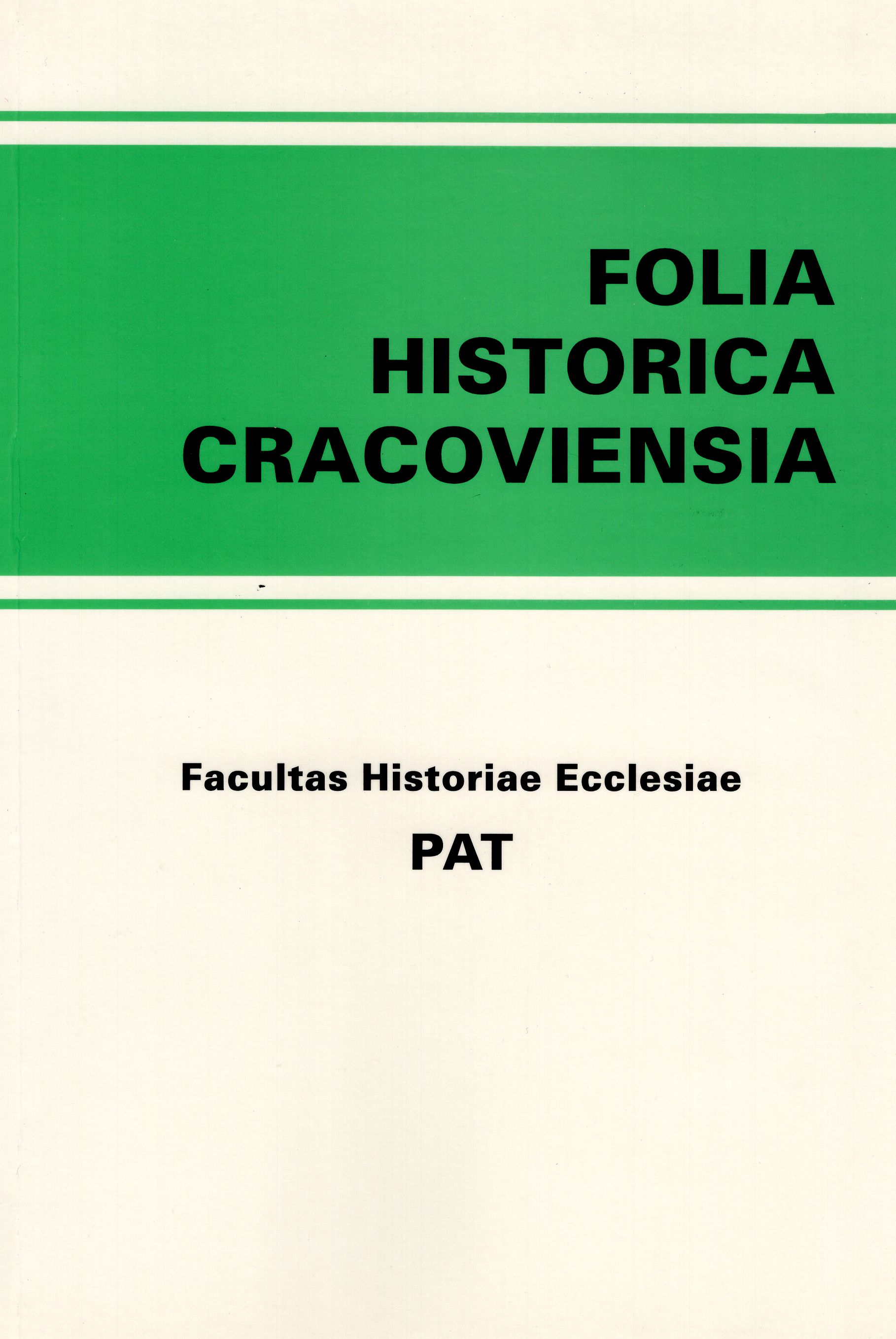Paralelizm wartości ideowych, artystycznych i przestrzennych eremu OO. Kamedułów na Bielanach w Krakowie z pustelnią Karmelitów Bosych w Czernej do końca XVIII wieku
DOI:
https://doi.org/10.15633/fhc.1338Słowa kluczowe:
zakony, karmelici bosi, kameduli, klasztor na Bielanach, klasztor w CzernejAbstrakt
Przedmiotem tego artykułu jest koicydencja czasowa, historyczna, geograficzna oraz paralelizm wartości ideowych i artystycznych dwóch pustelni, usytuowanych w niedalekiej odległości od siebie, na malowniczym terenie Jury Krakowsko-Częstochowskiej, należących do Zakonu OO. Kamedułów na Bielanach i Karmelitów Bosych w Czernej.Pobrania
Opublikowane
2003-12-31
Numer
Dział
Artykuły
Licencja
Prawa autorskie (c) 2015 Benignus Józef Wanat

Praca jest udostępniana na licencji Creative Commons Attribution-NonCommercial-NoDerivatives 3.0 Unported License.
Autorzy publikujący w czasopiśmie udzielają jego wydawcy zgody o następującej treści:
- Autor zachowuje autorskie prawa majątkowe do utworu, a jednocześnie udziela wydawcy czasopisma zgody na jego pierwszą publikację w wersji drukowanej i wersji online na licencji Creative Commons Uznanie autorstwa 4.0 Międzynarodowe oraz zgody na wykonywanie opracowań, w tym przekładów.
- Autor ma możliwość udzielania zgody niewyłącznej na opublikowanie utworu w wersji, która ukazała się w czasopiśmie (np. zamieszczenia go w repozytorium instytucjonalnym lub opublikowania w książce), wraz z informacją o jego pierwszej publikacji w czasopiśmie.
- Autor może umieścić swój utwór online (np. w repozytorium instytucjonalnym lub na swojej stronie internetowej) jeszcze przed zgłoszeniem utworu do czasopisma.

